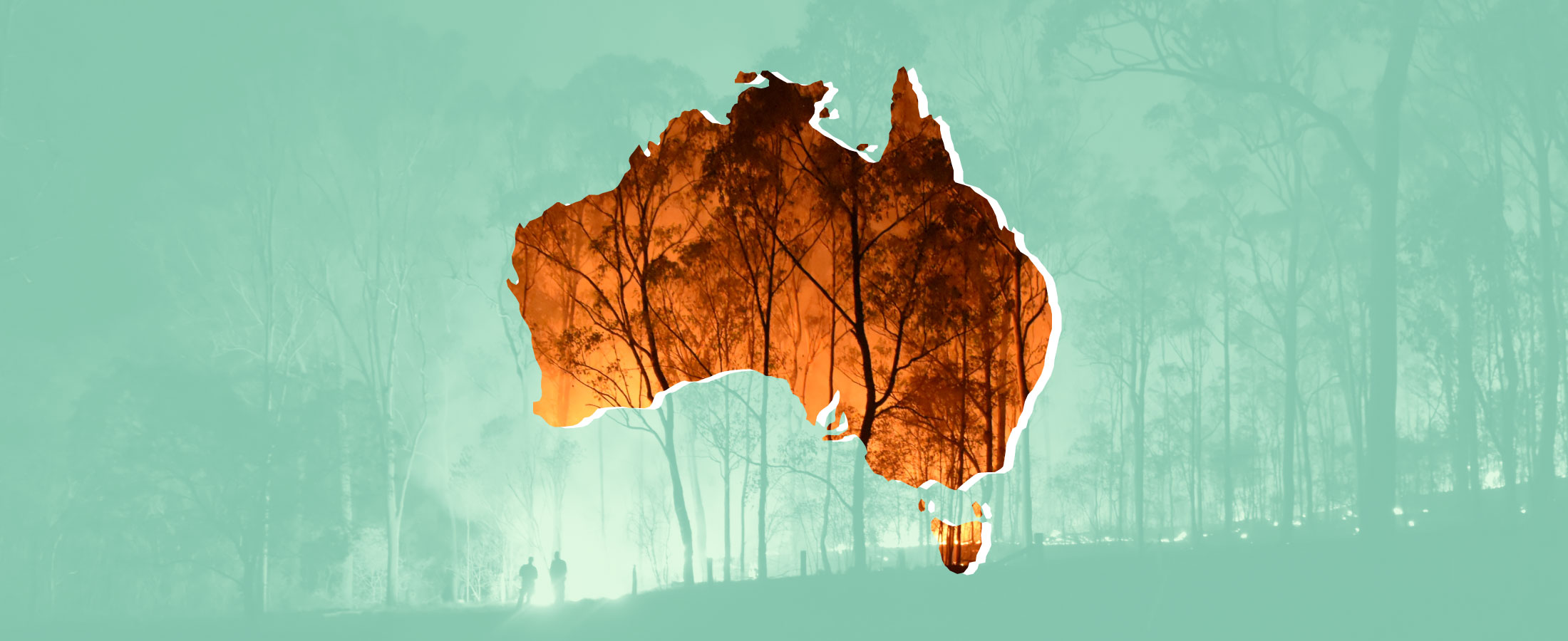Jan 13, 2020
Why Australia is Climate Change’s Latest Victim
It will cost the country billions to recover

Australia is facing the ecological and financial impact of climate change as the country fights enormous bushfires, reportedly made worse by record-breaking heat.
The bushfires have spread across 25.5 million acres in Australia since September, 2019, burning down thousands of houses, killing 27 people, and killing or injuring an estimated 1 billion animals, according to Reuters. The fires have also reportedly produced nine times more emissions than California during its record-breaking fire season in 2018.
Meanwhile, the bushfires have had an impact on the economy in Australia as the government tries to stop them from spreading.
But Australia isn’t the only place potentially affected by climate change. Climate change, in particular rising temperatures and fires, can have an impact on agriculture, health, and infrastructure, among other things, all of which can take a financial toll on economies all over the world. The 2018 National Climate Assessment, which was published by the National Oceanic and Atmospheric Association, found that the average annual temperature of the U.S. could increase by 2.3 degrees by 2050.
The study also found that aging national infrastructure could be further harmed by extreme weather such as flooding, heatwaves, and wildfires, leading to threats to the economy, national security, and human health.
Climate change and economies
Global warming has been linked to the increasing ferocity of hurricanes, as well as the growing severity of droughts and catastrophic forest fires in recent years. Although Australia experiences bushfires annually, these fires are occurring in the middle of a drought and a heatwave.
Scientists suggest that Australia’s fires are thought to be the result of climate change since temperatures have increased by more than one degree in Australia since 1920. In December, 2019, Australia recorded its hottest day in history at 40.9° Celsius, or 105.6° Fahrenheit.
Australia’s economy
Australia’s tourism industry is struggling because of the fires. Visitors have been forced to evacuate areas such as tourist destination Kangaroo Island, according to Reuters. The tourism industry employs 5.2% of people in Australia and accounts for 3.1% of the country’s GDP, according to Bloomberg.
The fires are expected to ultimately cost more than $4.4 billion (AUD) in damages. The Australian government has promised $2 billion (AUD) to aid recovery as homes and farms throughout the country continue to struggle with the fires. The government has also created a National Bushfire Recovery Agency to fight the fires and manage recovery.
While firefighters from Australia and abroad continue to fight the bushfires, they are expected to continue throughout January and February, the height of the fire season in Australia.
Investing When You Can’t Predict the Future
Investing always involves risk and the uncertainty of climate change can complicate the future of business and compound that risk. Remember that diversifying your investments can help protect you from volatility. A diversified portfolio contains a variety of stocks, bonds, funds, and other securities. It will also aim to invest in diverse geographies around the world.
Diversification is also part of the Stash Way, a philosophy that includes regular investing and investing for the long term.











